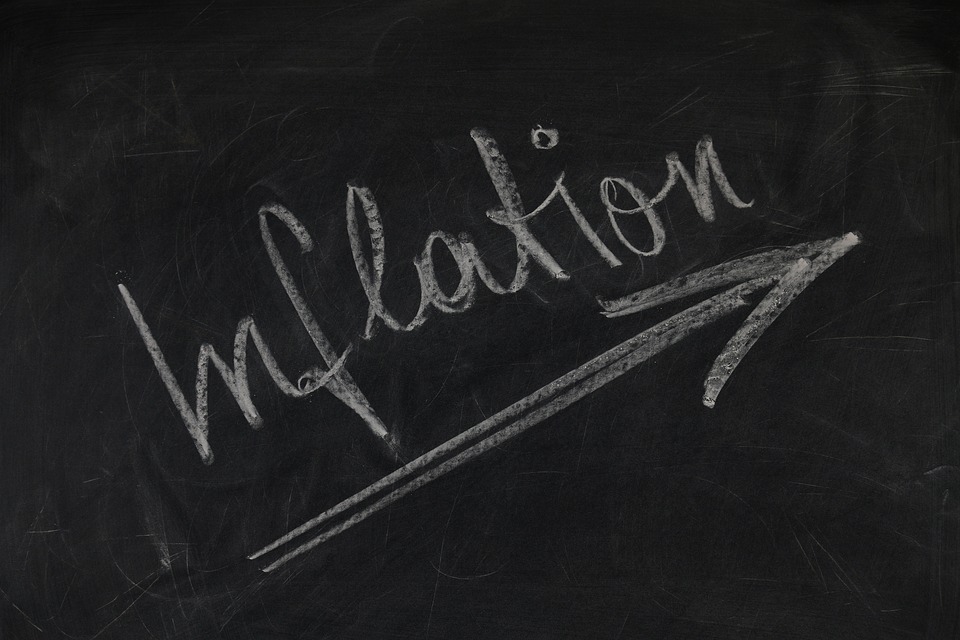 Image Source: Pixabay
Image Source: Pixabay
A key justification of the Fed – of Keynesian central banking – is that the way to make an economy grow is to print money. This is the “Philips Curve” – a tool that claims a trade-off between unemployment and inflation.In that model, if you want economic growth, you print more money. If you printed too much and got inflation, you just print less. Typically by raising interest rates so banks create fewer loans.The punchline, of course, is that central banks should print as much as possible, all the time.After all, if printing money creates prosperity, everybody wants prosperity.And then, when prices rise from all that printing, you just beg, borrow, and steal to calm pesky voters down enough to get back to printing.Of course, for non-Keynesian economists – Austrians and free marketers – it’s a lot simpler: money-printing is counterfeiting. And, like all counterfeiting, it steals from everybody else’s dollar, pouring water into the wine of their life savings. With a kicker for economic distortions – recessions – caused by how the new money was printed.
The “Inflation is Prosperity” Fallacy
The inflation-is-prosperity fallacy has been internalized by the ruling class. For example, whenever I advocate sound banking – where the bank actually has the money in the vault – I get attacked by Wall Street types complaining that if banks couldn’t counterfeit via fractional reserve, the economy would freeze up.So where does it come from? Simple: it’s confusing activity and wealth.To illustrate, if Hunter Biden prints a million dollars and hits Vegas for the weekend, there will be a lot of very busy strippers.It’s fantastic for the Las Vegas economy – tissue-fire level economic growth, an extra million in GDP in however many hours Hunter’s high lasts.Of course, where did the money come from? It was siphoned from every other dollar holder. Diluted like water into wine.So grandma pays a little more for groceries, but at least Hunter had a hell of a weekend.Activity was created, wealth was not. And all that was left was the theft.
“Helicopter Money” and the Wallet Fairy
Now, there is a way around the theft, first proposed by Milton Friedman in 1969: “Helicopter Money.” The idea is to find some way to print money into the economy without distorting it. Milton used the image of a helicopter flying over the city dumping money. Of course, even that distorts – if you happened to be walking on 2nd Avenue Thursday afternoon and the helicopter flew by you’re the new elite. So the closest government get is stimulus checks – which have the added bonus of buying votes. Alas, even stimulus distort: the young and irresponsible spend fast – bubble tea sales take off and strippers work extra shifts. While the old and prudent save and get richer in future. Fortunately, we have an elegant little thought experiment that we can test the whole idea of whether printing money makes us rich: the Wallet Fairy. This little critter sneaks into every bedroom, bank vault, and payroll department across America on December 23 – the founding of the Fed – and draws an extra zero on the money.So you went to bed with $10 in your pocket and woke up with $100. You laid down with $1,000 in the bank and woke up with $10,000. You went to bed making $12.50 as a customer associate at Best Buy, now you make $125.Perfect helicopter money.So are we rich? Does the customer associate upgrade his house?Of course not. Because everybody can see what happened. Houses aren’t $400,000 anymore, now they’re $4 million. Bubble teas are $50, rent is $15,000, strippers are too much. It would have absolutely zero impact.We actually have proof from similar situations in countries that did the opposite, knocking zeros off the money. Mexico in the 1990s, for example, lopped 3 zeros off the peso. So a dollar didn’t buy 3,000 pesos, now it only bought 3.What happened? Nothing. Everybody adjusted overnight. A 5,000 peso coffee was now 5 pesos and nobody was dumb enough to think they got rich.Unfortunately, in the real world, inflation is never so obvious as adding a zero or lopping off 3. In the real world inflation does, in fact, change things: Wages are slower to adjust than groceries, long-term contracts get effectively canceled, pensions get gutted. Cantillon Effects divide every single person into winners and losers, draining those who have worked hard to build something of value, while rewarding those who did not.
Theft Is Only Half the Harm from Money Printing
Every inflation carries within a million human tragedies, a million dreams lost, a million life’s works squandered.But the first step is understanding that printing money itself doesn’t create anything.Its one alleged benefit – the tissue fire – is a lie, an illusion that serves the politicians, bureaucrats, and lobbyists who, in reality, are aiming for the very redistribution inflation delivers.Final point, the theft is only half the harm from money printing. Because, in reality, almost all new money comes in via asset markets, interest rate manipulation, and the privileging of bank credit over actual savings.I’ll talk about these another week, but they are the source of our clockwork recessions – each delivering trillions in destroyed value and millions of jobless workers – of the permanent financial crashes that now stalk the American people, and of our exploding national debt.Peter St. Onge writes articles about Economics and Freedom. He’s an economist at the Heritage Foundation, a Fellow at the Mises Institute, and a former professor at Taiwan’s Feng Chia University. His website is www.ProfStOnge.com.More By This Author:What Happens To Gold When Bonds Are No Longer A Safe Haven?
Cultural Affinity For Gold In China Could Fuel Rising Prices Globally
Market Gyrate On U.S. Government Shutdown Theatrics











Leave A Comment